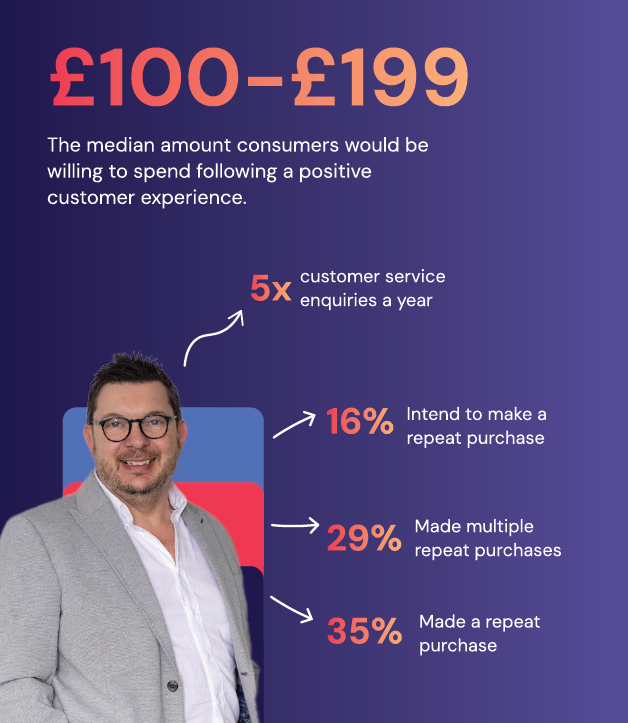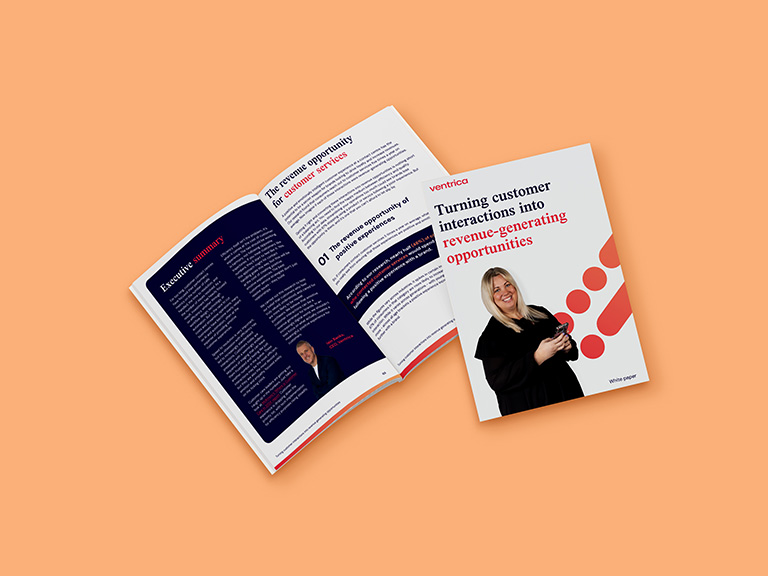How can you adopt AI into customer services without sacrificing emotive experience?
AI enhances efficiency, but empathy builds loyalty. Discover how brands can blend automation with emotional intelligence to elevate CX - without losing the human touch.
Download our latest white paper- Insights, blogs & articles
Blending empathy and AI: adopting automation without losing the human touch
AI adoption in customer services has exploded, bringing efficiencies galore. And more importantly, raises an important question: How can brands ensure that they’re not sacrificing empathy for speed?
As part of our wider insight series into the evolution of AI use in customer experience, this blog explores how brands can get the balance right. For further insights, take a look at our latest whitepaper which includes data-backed frameworks for brands to blend human empathy with AI adoption.
Today, brands are toeing an increasingly fine line as they adopt AI into their customer service workflows. On one hand, they need to stay innovative and keep up with their competitors, but they also can’t afford to sacrifice the quality of their customer service. And while customers want brands to keep up with the latest tech, they also don’t want to be greeted by an endless line of AI chatbots.
According to Gartner, 64% of consumers prefer companies that aren’t using AI in their customer services. They might be after a speedier service, but not at the cost of human connection. In fact, our own research found that the majority of consumers (76%) had their positive customer service experiences delivered by a human, rather than a chatbot.
Brands need to strike a balance between tech and an emotional human connection. While tech implementation has shot up the priority list for customer care leaders, customer experience is dropping down, and it’s starting to show.
According to our research, nearly a third (31%) of all customer service experiences are negative. Over two-thirds (67%) of those who had a negative experience would stop buying from the brand. It’s vital that brands address this now before they lose the hard-earned loyalty of their customers.
Taking a few steps back
So if you’re a brand currently using AI in your customer services, does that mean you need to scrap it completely? Far from it.
Many brands have gone all-in on AI from day one, replacing human agents with chatbots at pace. But we think AI should complement human support, not replace it. Chatbots are not quite ready to replace humans entirely, but they can come in handy as a support tool, helping streamline queries and free up human agents for more complex issues.
Each customer interaction is a chance to build loyalty and you don’t want to waste it. In fact, our research suggests that positive customer service experiences boost brand loyalty 79% of the time, so brands should be using every touchpoint to make these moments count.
Where’s the hold-up?
Now, what’s the most common complaint about customer services? We’d be willing to bet it’s something along the lines of, ‘I’m tired of being passed around departments just to find the right person who can solve my problem’. It’s a universal issue, right? You call up customer services, wait in a queue to finally speak to a human agent, who then has to forward you on to another queue to speak to the right person, and so on.
This is precisely the kind of problem where AI, used correctly, can help. When we asked consumers what factors made up a positive experience, over two-thirds of consumers chose a ‘quick resolution’. And if customers are being routed through several departments before they can even discuss their query, that’s a far from speedy process.
Brands should be leveraging AI analytical tools here to triage their incoming calls. Mining as much information about the nature of incoming queries as possible so that they can be directed to the right agent in the right department to best deal with the issue. Then, when an agent is connected with a customer, they’ve got all of the relevant information available in front of them, without having to ask the customer the same round of questions again.
Humans can then be empowered to deliver an emotional customer experience – one that goes beyond just resolving issues, but instead making the customer feel something positive and memorable during their interaction with a brand. For example, they could use customer data and insights to tailor communication that feels genuinely relevant, not robotic or transactional. They should make sure every interaction matches the brand’s values. So if it’s a luxury brand, the experience needs to feel premium; if it’s a lifestyle brand, it should feel fun and uplifting.
A win-win situation
Integrating AI into your customer service workflows doesn’t need to come with the sacrifice of your customer experience. Implemented with care, it can still be used to hit efficiency goals while also boosting your customer experience scores.
According to our research, nearly half (46%) of consumers who contacted customer services would spend more following a positive experience with a brand. So, if brands can leverage AI and push their positive customer interactions from around the 30% mark up to the 60% or even 70%, they could unlock a wealth of additional revenue.
Instead of thinking of AI purely as an efficiency-driver, consider it more as a way to unlock more time. Rather than replacing your human agents, it can give them more time to focus on what really matters – delivering an emotive experience.

So what now?
Maybe you recognise your own customer service in some of the examples, maybe you’re thinking, ‘What can I do to fix this?
It might seem like a big lift, but there are a few basic steps that every brand can take to level up their customer experiences:
- Don’t let AI take over: AI might be smart, but it won’t know all of the ins and outs of your customer services right away. Integrate firstly into the simpler, more repetitive interactions where it can find answers easily in your support centre. Introduce it as a co-pilot figure for your team, a tool to help them to help customers.
- Review and repeat: The whole idea with AI is that it never stops learning. So building in a feedback loop is essential to ensure it’s continuously refining its understanding of your customers. In time, your agents will feel confident handing over the simpler queries to it, and eventually, it will be ready to act as a triaging system.
- Enhancing emotive experiences: No matter how much it learns, AI cannot replace the emotional intelligence of your agents. It’s inevitable that at some point during a customer’s journey, they’ll have to speak to a human. But, by summarising all of its interactions with that customer, AI can make that handover seamless. Rather than spending time on the basic questions, agents can focus their attention on providing emotional support to customers and creating genuine connections.
Still unsure where to begin? Download our new whitepaper to find out exactly how you can build AI into your customer experience strategy without sacrificing the human touch.

Patrick Lloyd-Bradley
Chief Marketing Officer
